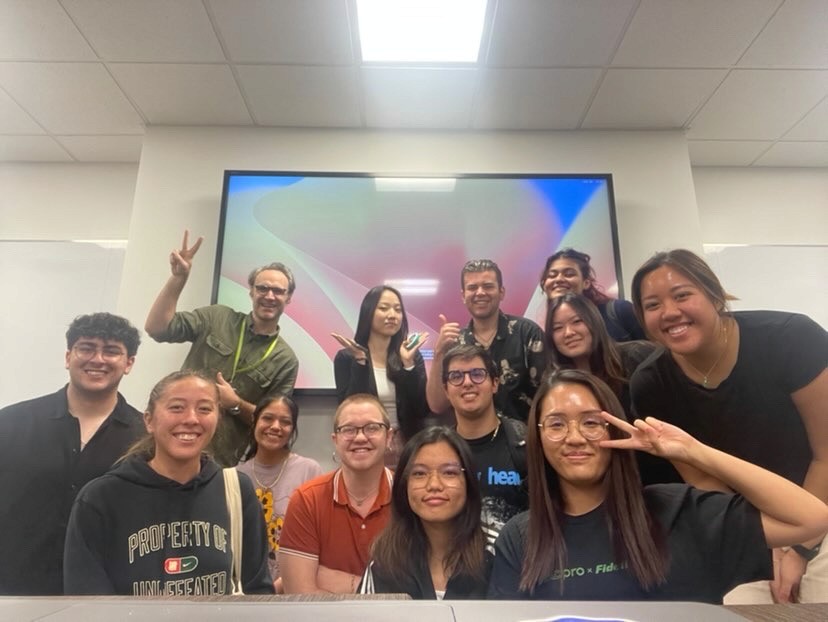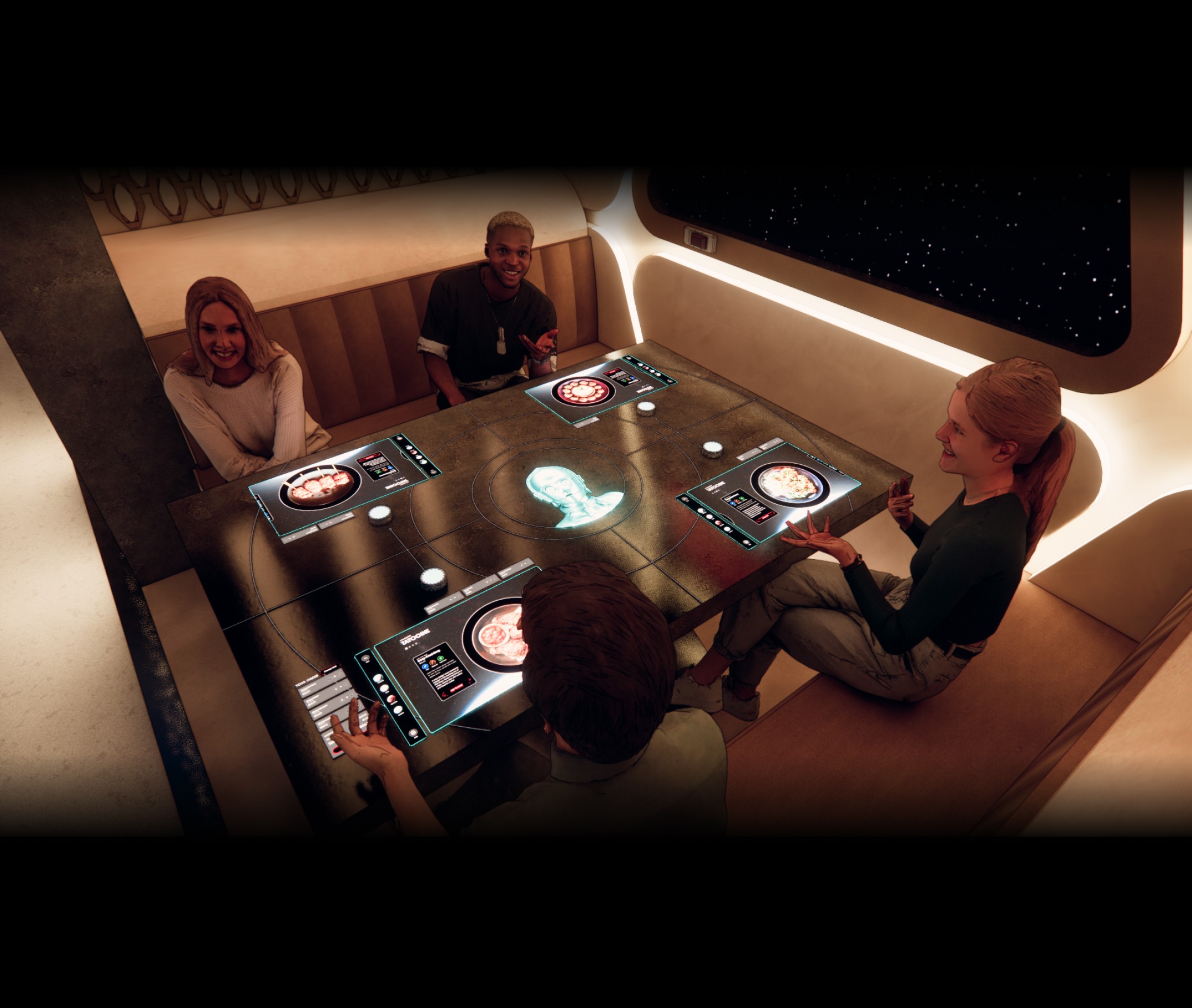
Interactive Dining Experience for Disney Parks
class project
•
March 2023 – June 2023
Skills
Interaction Design
Rapid Prototyping
Exploratory Design
Tools
Figma
Unreal Engine 5
ChatGPT
Collaborators
Ghalib Othman
Katy Somellian
Camilla de Lima Freitas
Role
I focused on interaction design and prototyping, building concept validation tests for our exploration into projection-mapped experiences.
Intro
We designed an initial concept of a projection dining experience as a way to address line waits for the Disney Theme Parks. Utilizing user testing, concept validation, and rapid prototyping, this was a unique self-driven class experience.
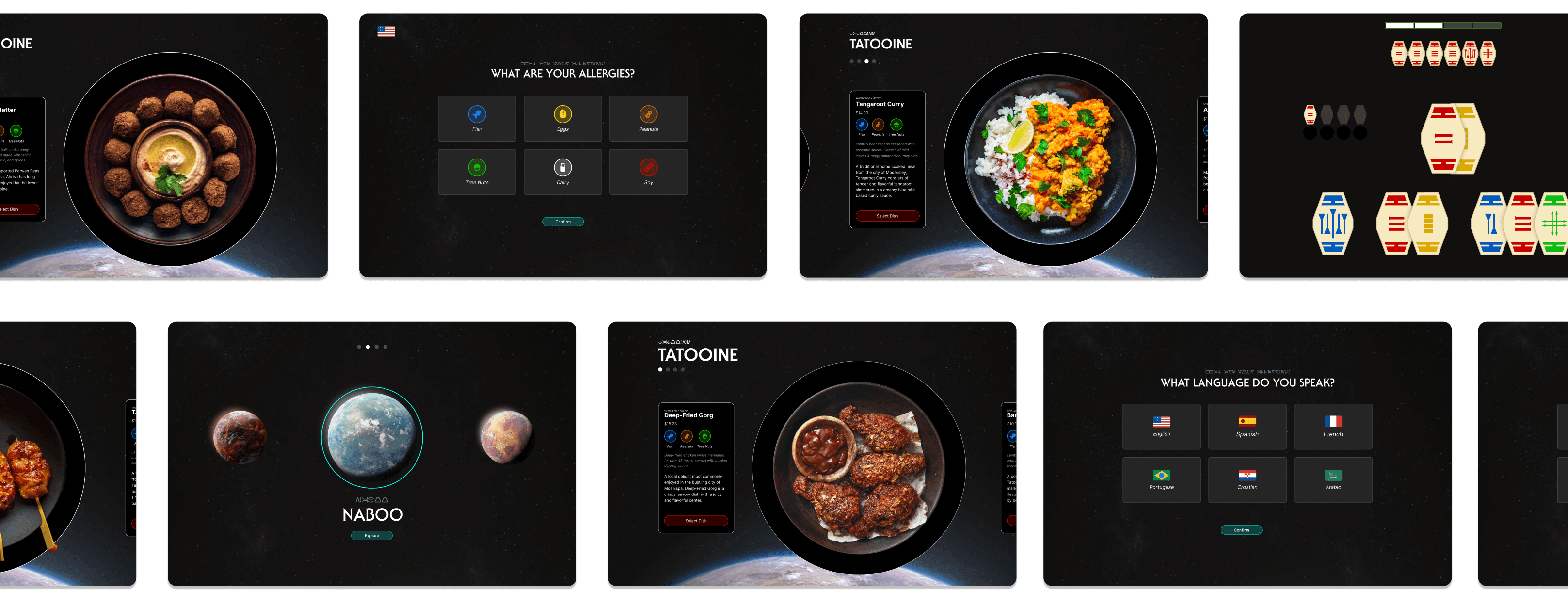
Go to the final deliverables
→
→
→
Context
For our Studio I Course, I teamed up with Ghalib Othman. We had ideated around how we could incorporate UX innovation into the Disney Parks experience — particularly when it comes to the long wait times for rides and extremely high cost per visit.
When approaching queue issues, research indicated that directly modifying the line system was challenging given our timeline, and given the intense focus on line systems by Disney Parks and their competitors, we knew we had to pivot.
These experiences like dining experiences, retail experiences, and larger park experiences, that are less experience-driven. This developed our strategy to reduce line congestion with a proxy: by exploring how we could elevate alternative experiences to offset massive ride lines.

Our Challenge
Design a dining experience that is as interesting and engaging as the rides and attractions at Disney Parks.
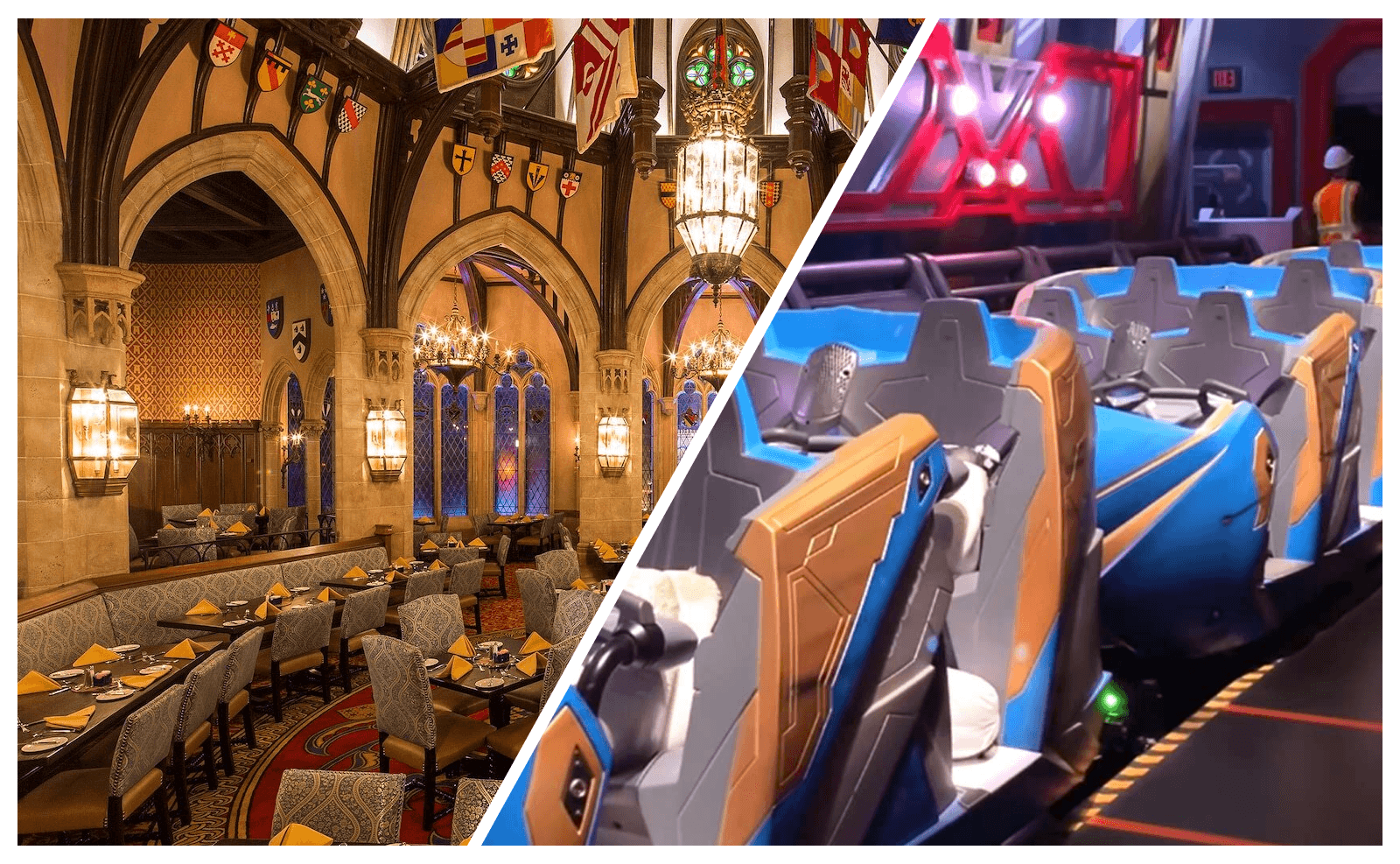
Research & Insights
Through user interviews, we gleaned values of the Disney experience that would inform our ideation. We set our sights high and explored what this experience could look and feel like. Our approach took form in two ideation sessions: “magical moments in unexpected places,” rooted in exploring ways we could transform existing experiences and “making experiences for those who can’t experience the parks” rooted in research uncovering the affordability of Disney.
“Magical Moment” Design Values:
Visitor Control Over a Story
Tactile
Sensory
Branding / Themed
Building Up Small Moments
Temporal
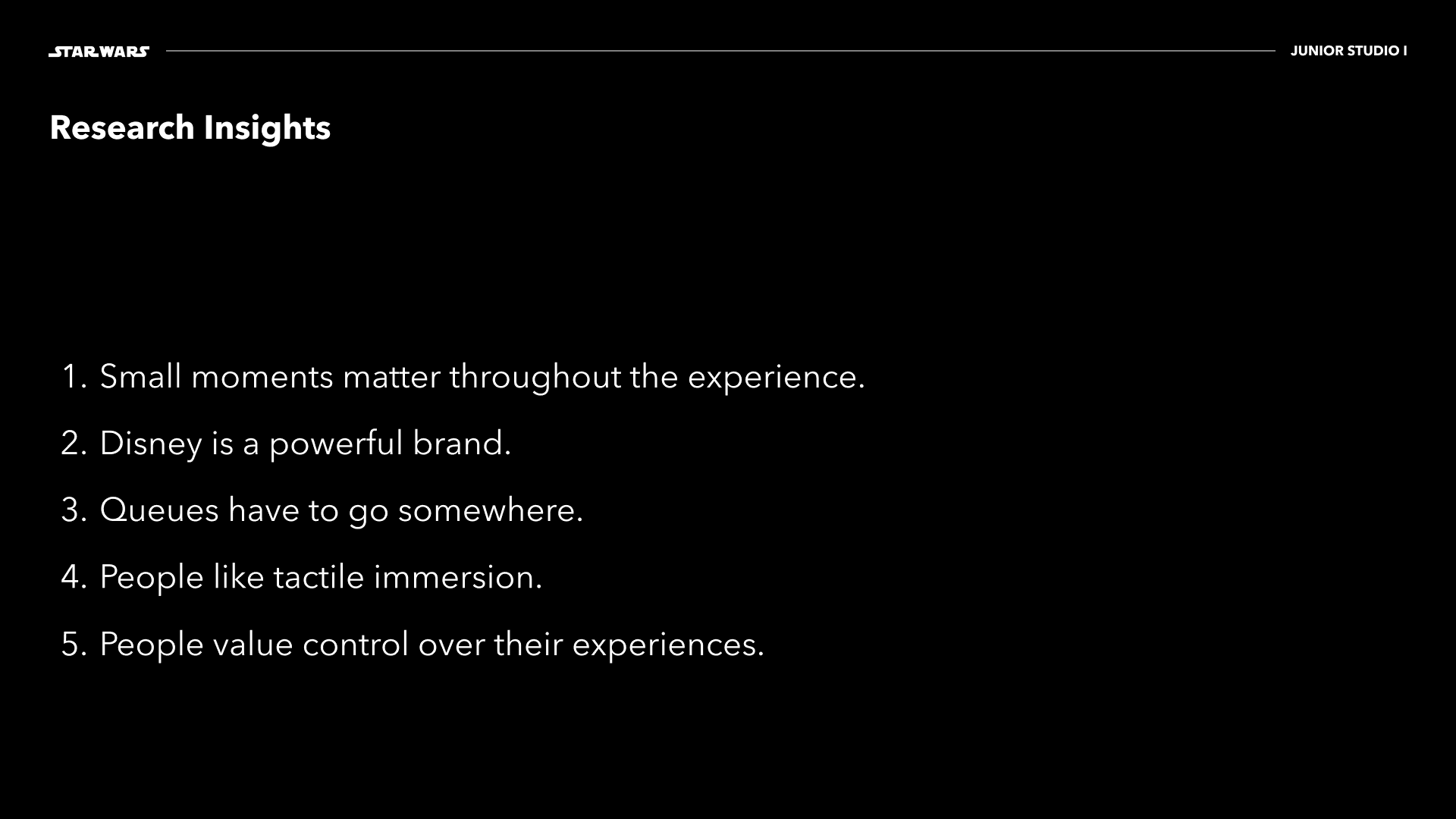
Ideate & Sketch
We took our many concepts and modeled them on an impact-effort matrix for the key players in this project: Disney parks, the designers (us), and most importantly park-visitors. We saw two paths forward: sit-down, interactive dining experience, and a Pokémon Go-like city scavenger hunt.
We determined through an initial round of concept testing that a dining experience was more impactful to our target user — families — as a shared experience.
We began sketching specifically for this experience, based on user flows and journey maps we used as our strategy.
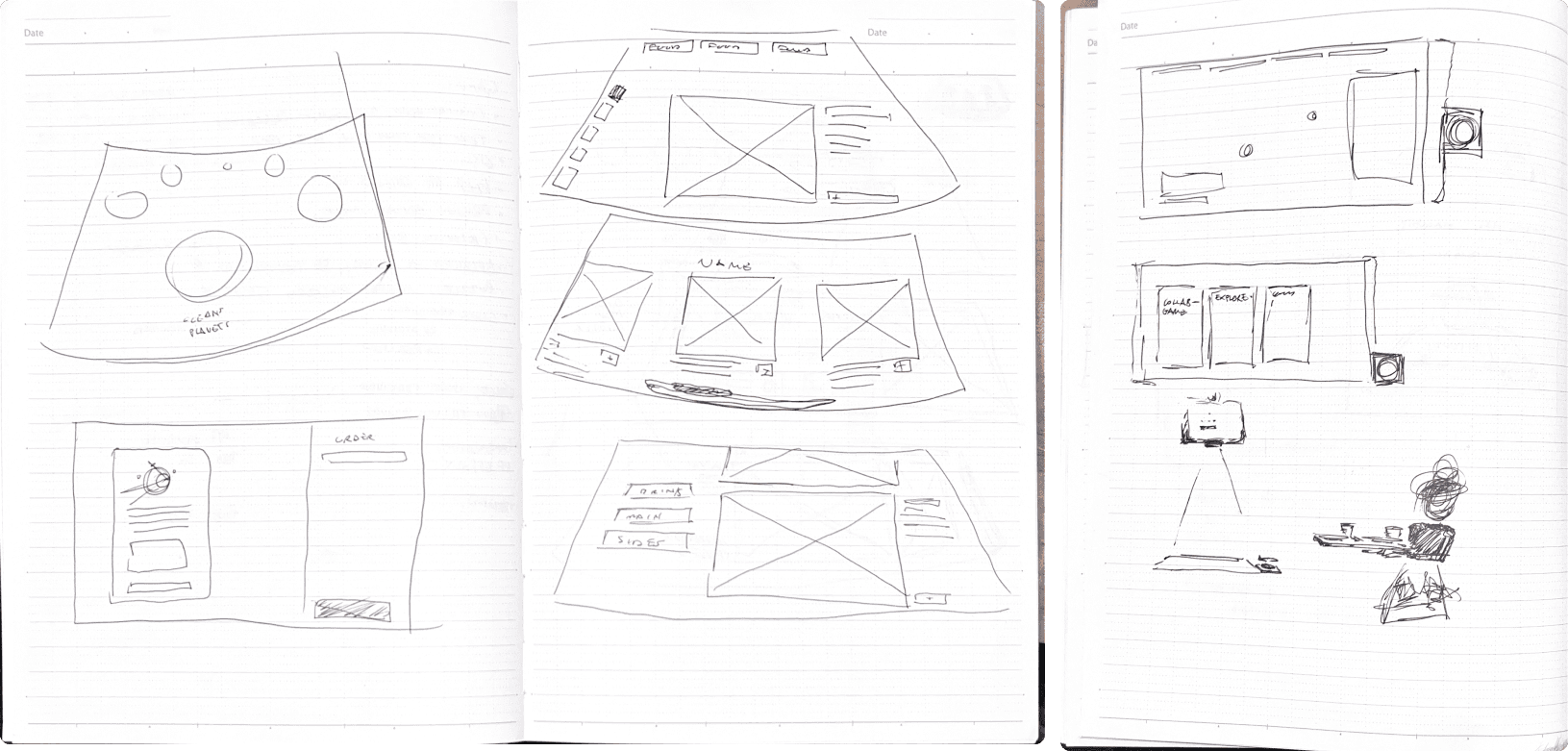
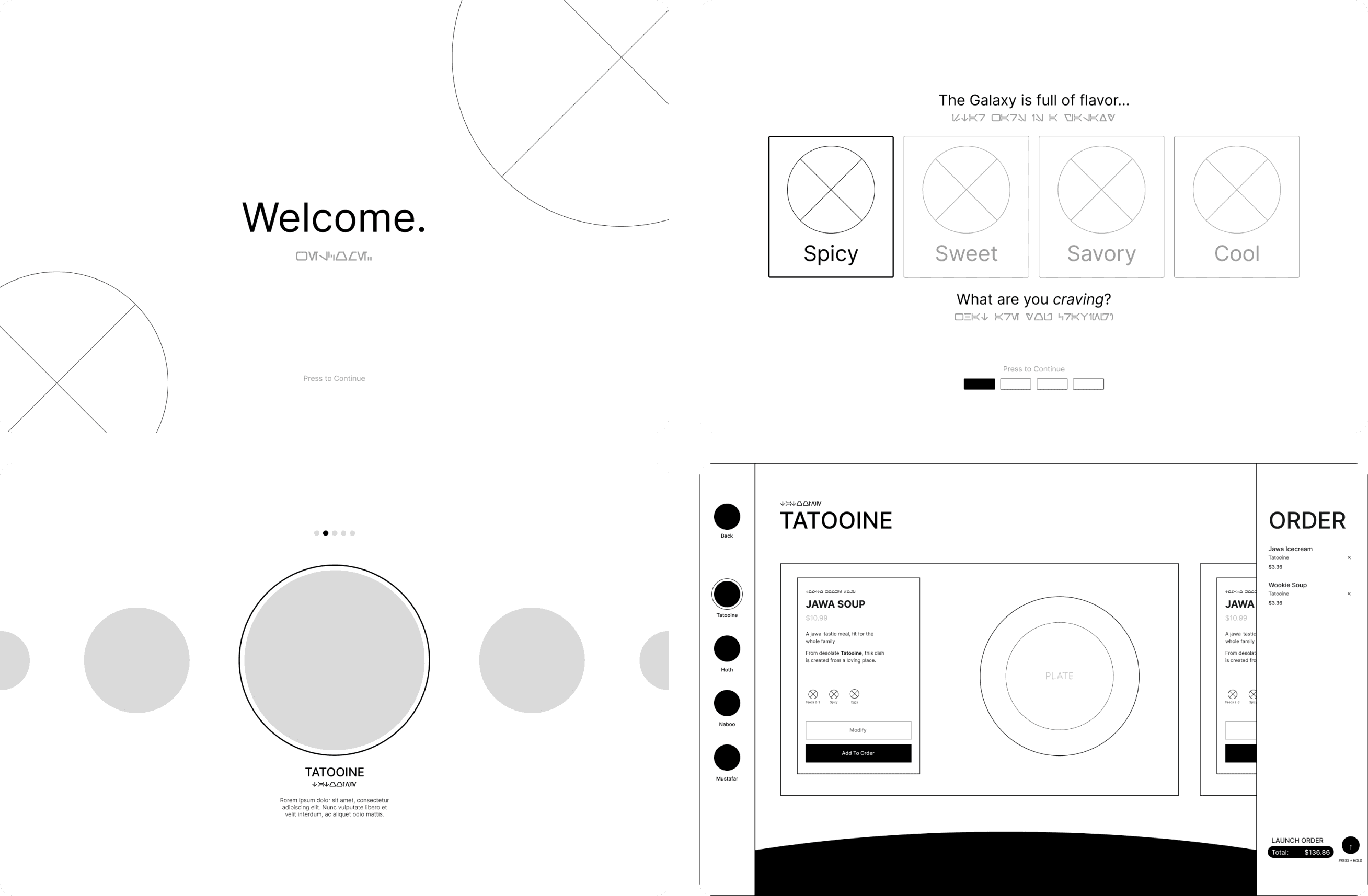

Test & Iterate
We began projecting UI on walls, tables, floors to test our concept, each time gaining an understanding of what decisions we needed to make and how to achieve them in a low-cost, low-effort way.
UI Tests:
We learned about designing for big screens, and how to embed best practices into our developing design system needs: larger text, simpler UI elements, larger images.
Table Tests:
We learned about how the size of the table matters in relation to the area of use for our customers, and consulting with a graduating interior designer, learned about best practices for human factors on the table area.
Projection Tests:
We learned about projectors, how they work, how we could use a physical item to map our light to, and why it’s more impactful and less costly than an LED screen.
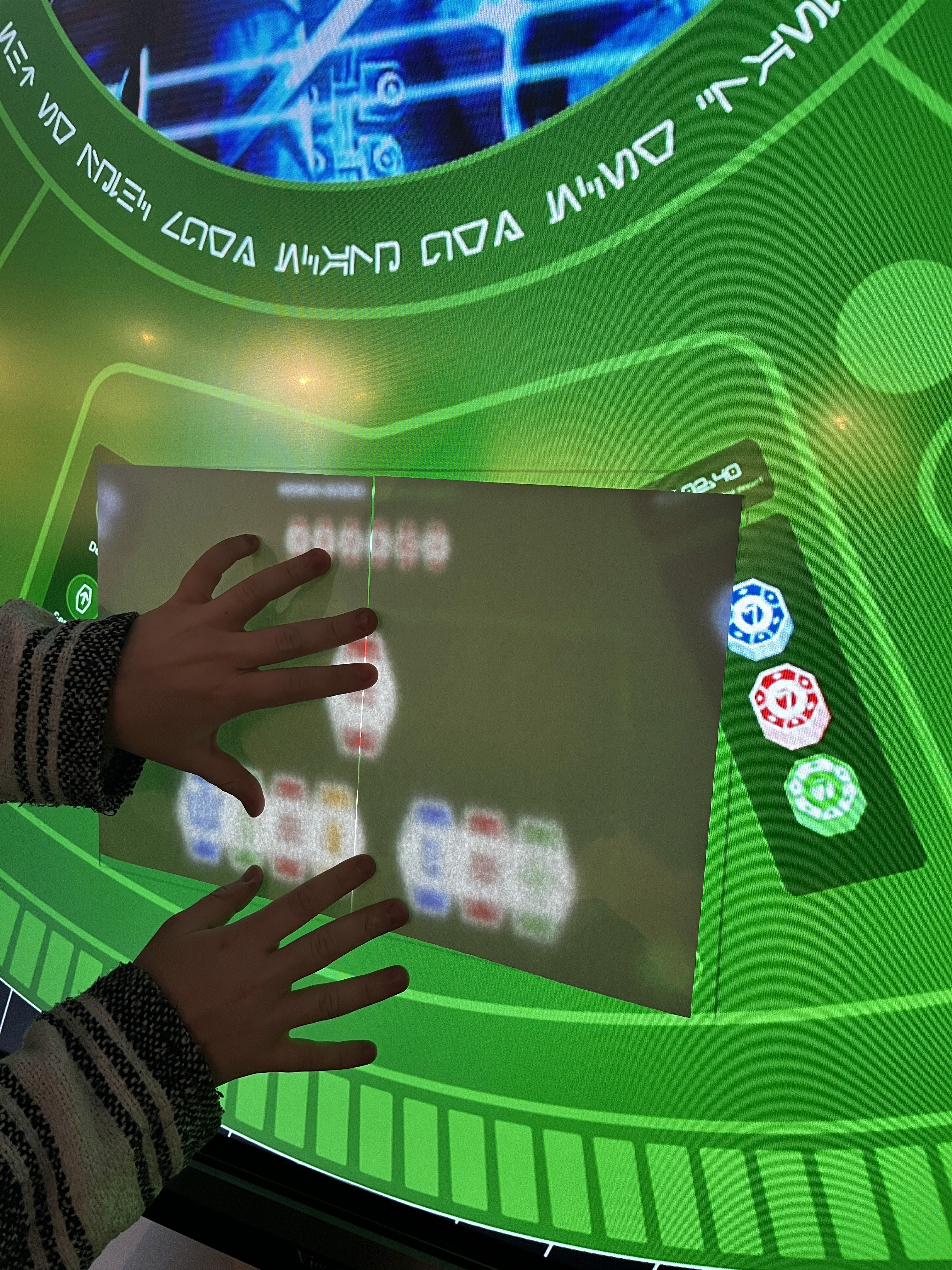
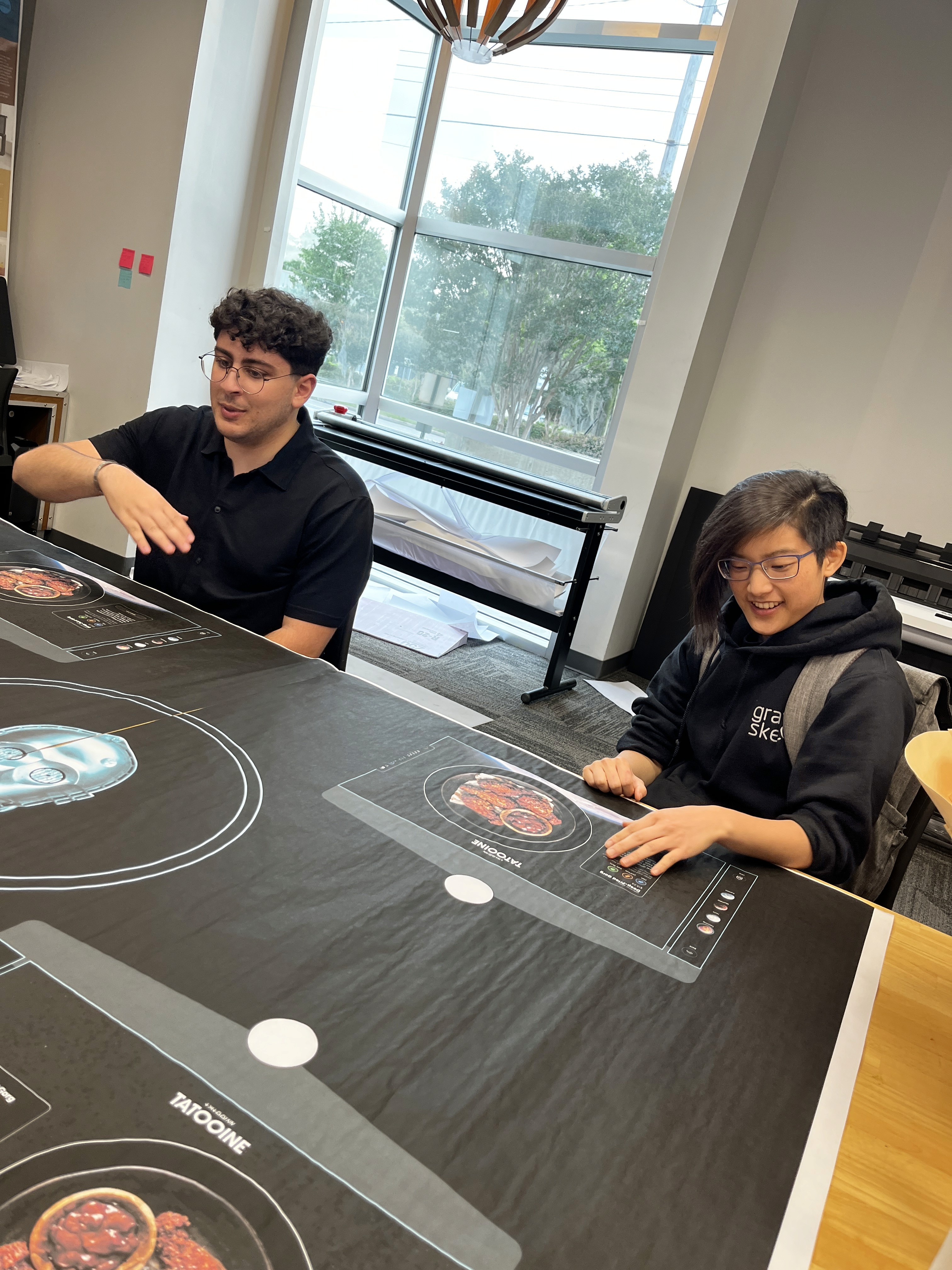

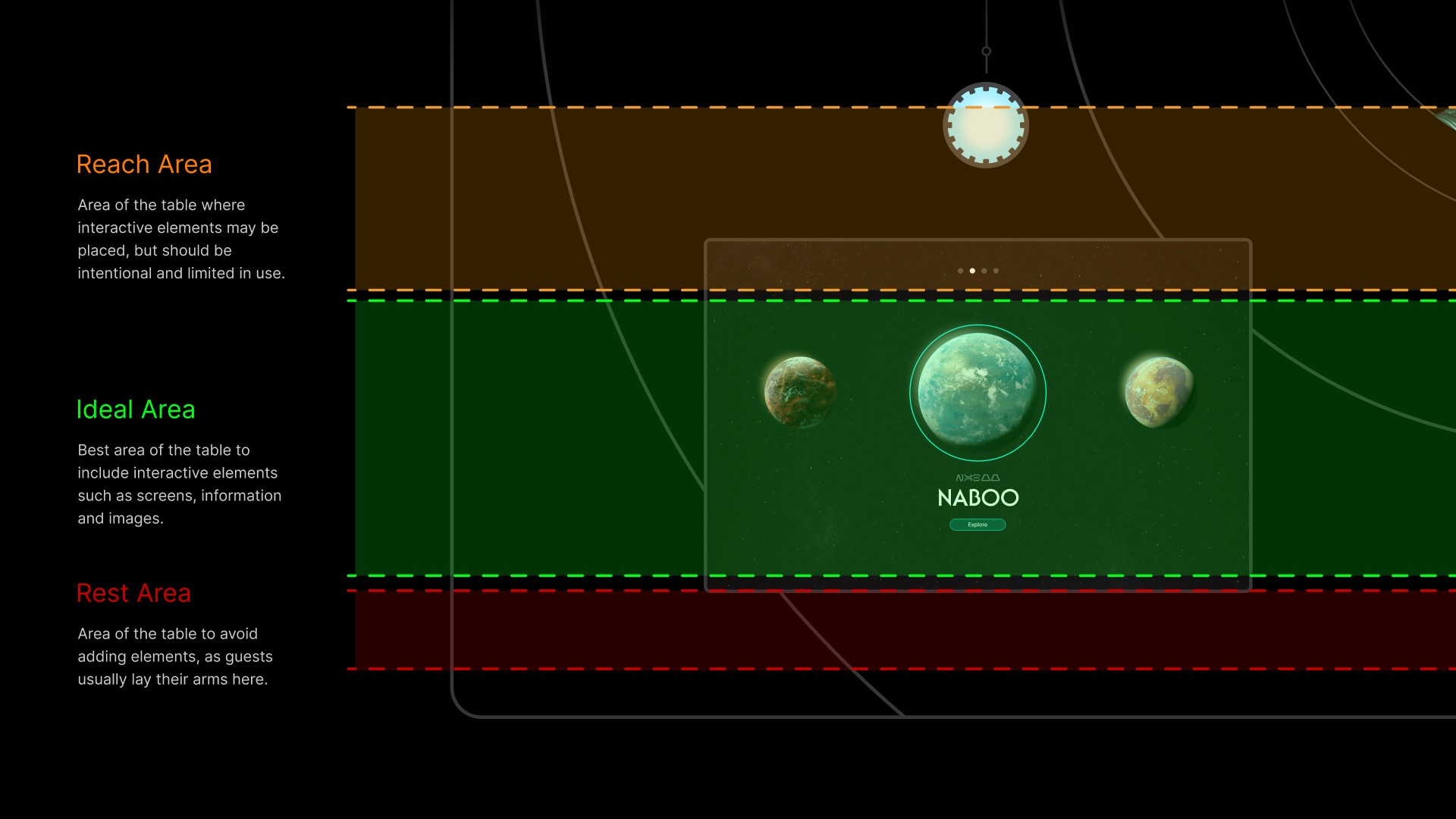
Final Delivery
Taste the Galaxy
Explore your favorite galaxy, all from inside the park.
Explore:
Explore the galaxy through diving deep into planets like Tatooine and Naboo’s local dishes and delights.
Through interactions on the projected table, guests are encouraged to sift through a personalized menu that ensures their tastes are taken to account with food from “other worlds”
Game:
Savvy a quick game with the galaxies most retched gamblers? Face the likes of Cad Bane and Hondo Ohnaka in a tense game of Sabacc.
Redirecting guest’s attention from the wait, they are ecnouraged to team up as a family to enjoy fighting against famous holograms of villains in the classic game of Sabacc — any Star Wars fan’s dream.
Dine:
After savoring the elevated cuisine, guests are left with memories of a galaxy far, far away.
Finally, as food is brought out to guests from droids, guests experience their food come to life before them — exactly as the hologram menus suggested. Small interaction points during the dining experience explains the stories of the dishes, if guests are interested in engaging further with the interactive table.

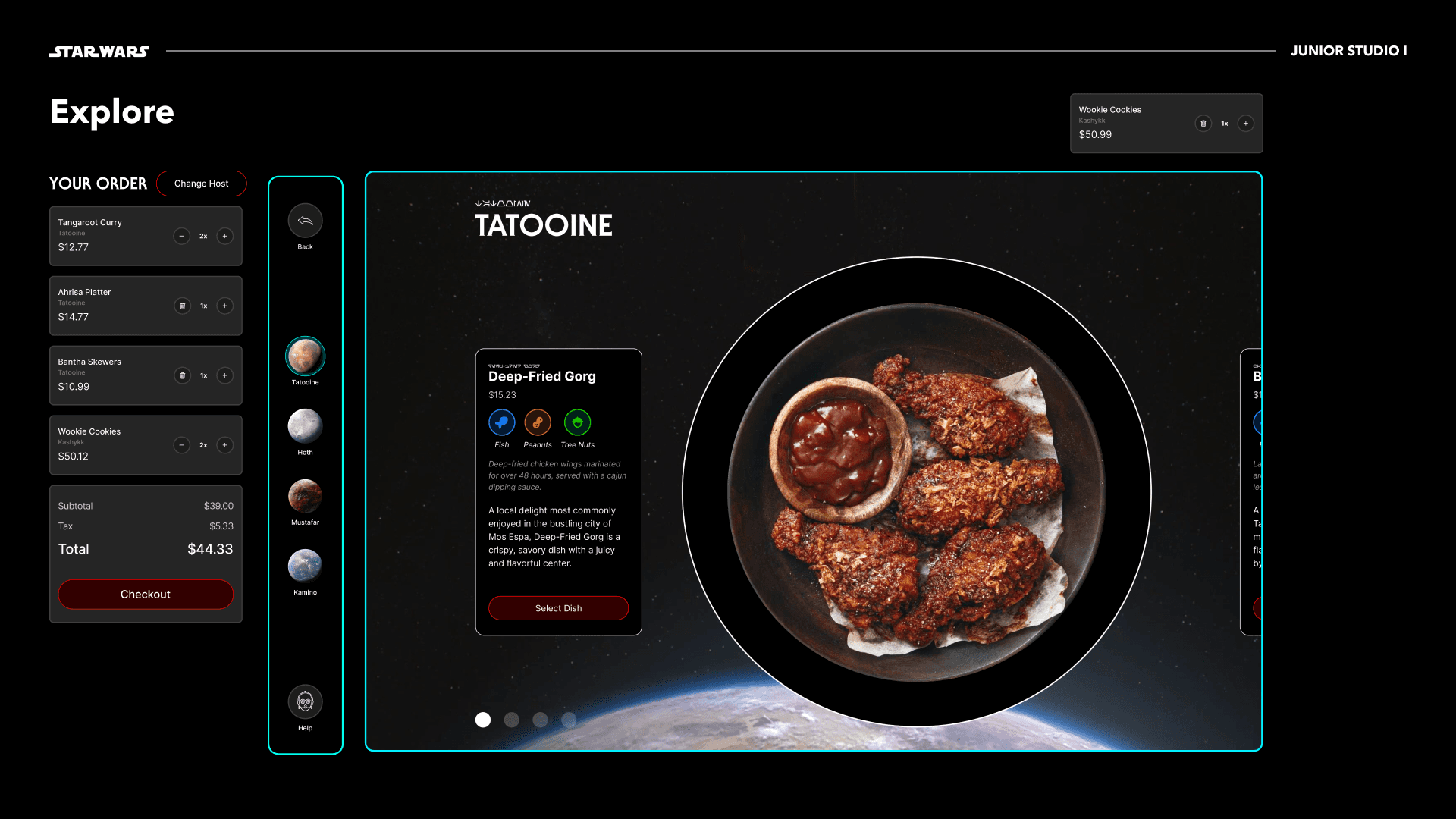

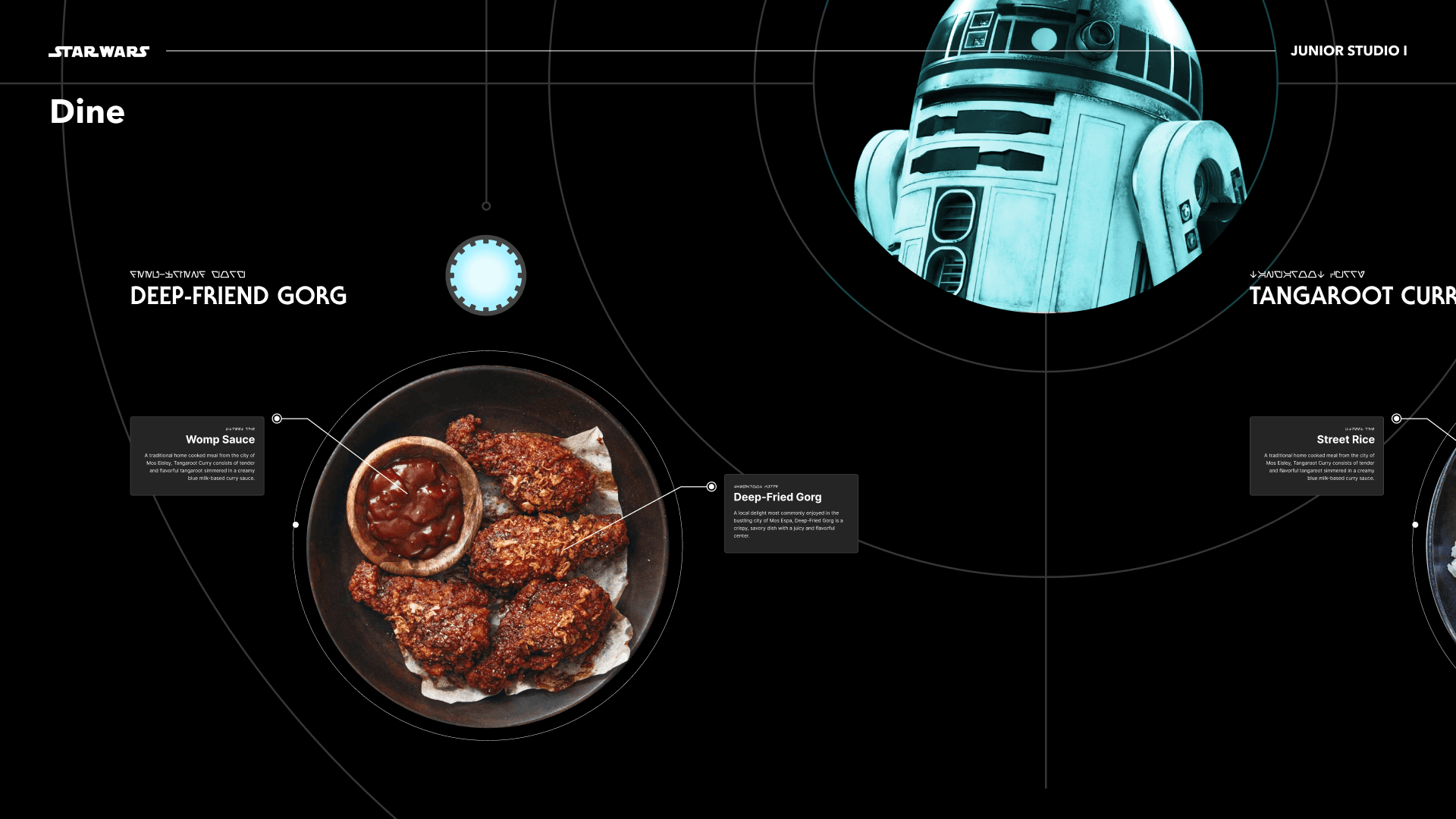
Next Steps
I would highlight key areas to look for in the next rounds of concept validation and testing of this concept to gauge its impact.
Key Questions:
Does a single dining experience attract an overwhelming amount of customers, running into the same problem?
Does the game experience distract individuals too much from the idea of a “family” experience? Would this experience be more beneficial outside of the park or inside?
Reservations vs walk-ins
Metrics to observe:
Demographics of guests - Families vs Individuals
Additional orders after initial ordering experience
Which games are more interesting than others
Dining times during peak hours of ride times
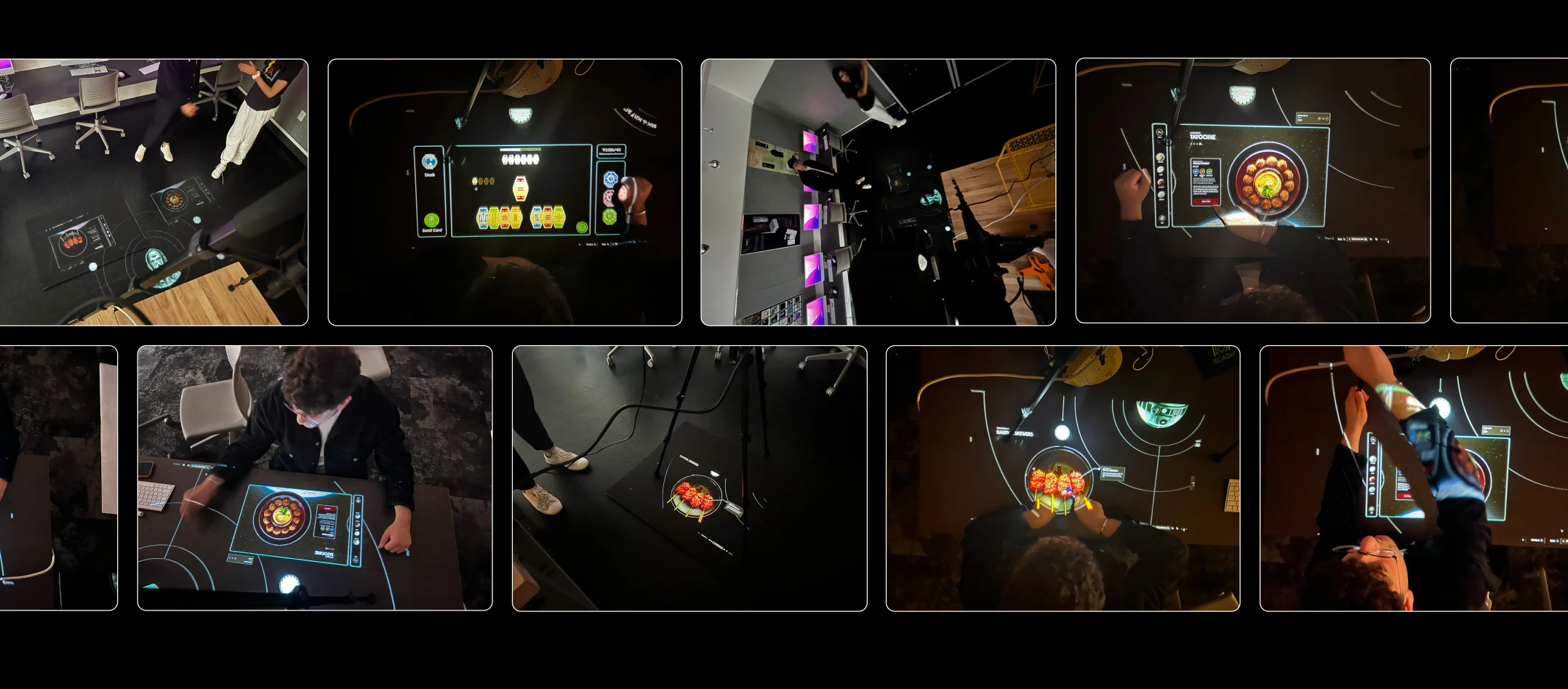
Reflection
I learned a lot during this project, specifically in the realm of creating prototypes that are quick, effective, and test ideas close to reality. Through challenges such as an initial pivot through research discoveries, interactive coding issues with updated software issues, projection issues, I was able to understand the importance of a strategy and being aware of my approach and mindset to problem solving through design. A design serves a purpose, even if it’s exploratory and experimental.
This project was a world class experience in prototyping and iterative design, and I hope to create every project with the level of “wow-factor” that this project gave our test subjects.
